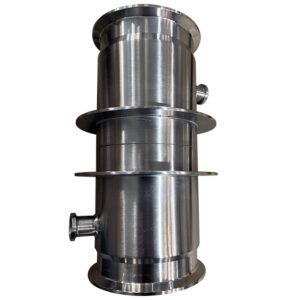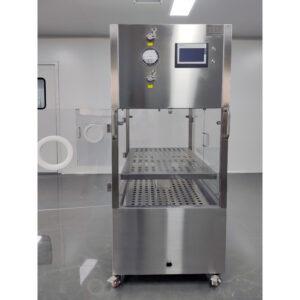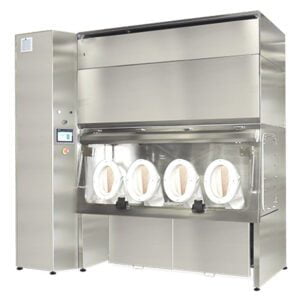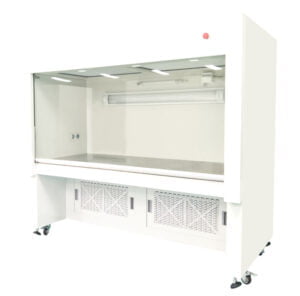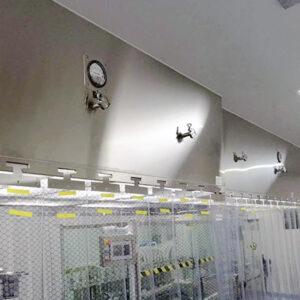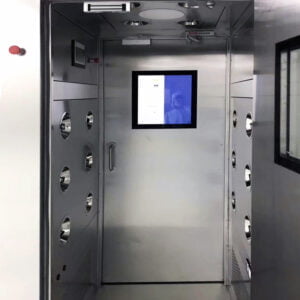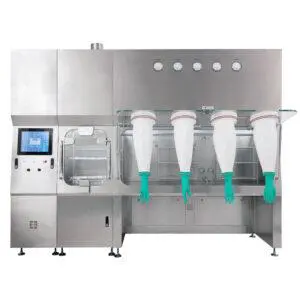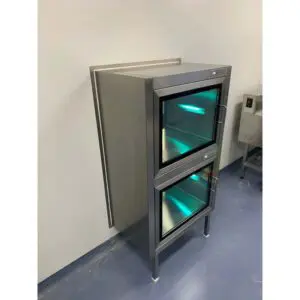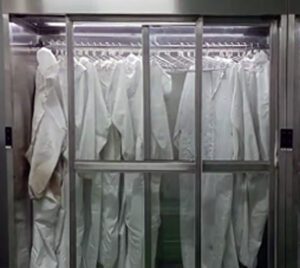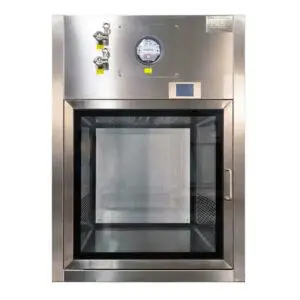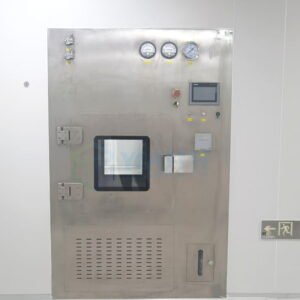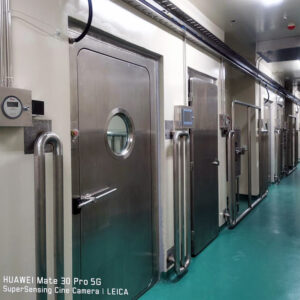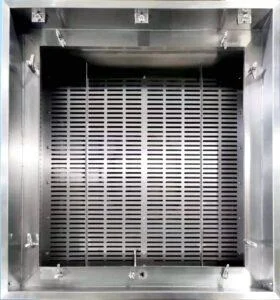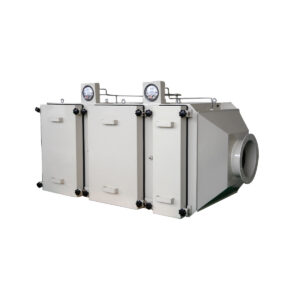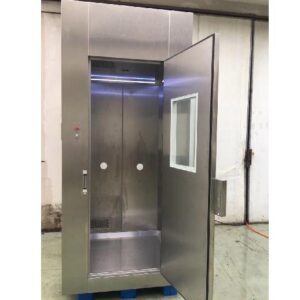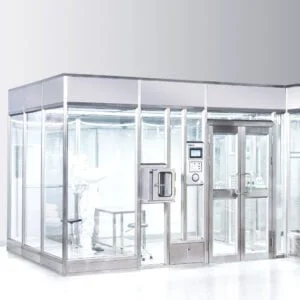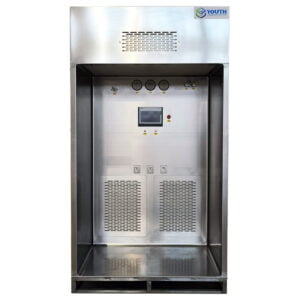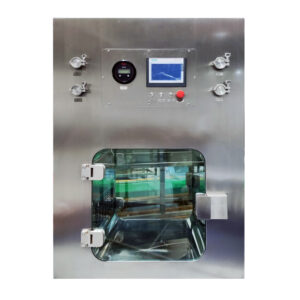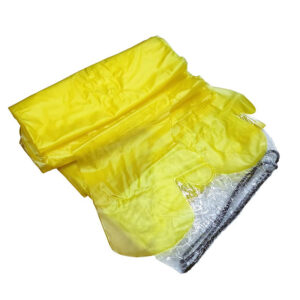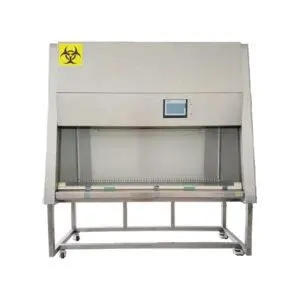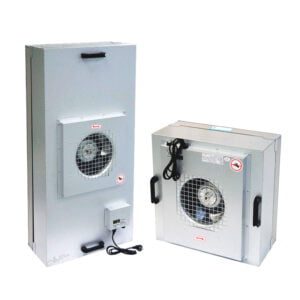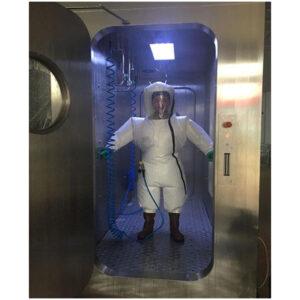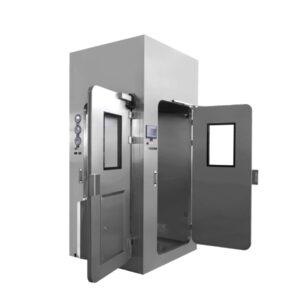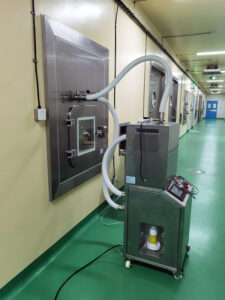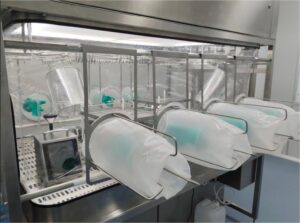Sterility test isolators play a crucial role in maintaining the integrity of pharmaceutical and biotechnology processes. These specialized containment systems ensure a sterile environment for conducting tests, safeguarding both product quality and worker safety. As with any sophisticated equipment, proper maintenance is essential to ensure optimal performance and longevity. In this comprehensive guide, we'll explore the intricacies of sterility test isolator maintenance, focusing on preventive maintenance schedules and essential tips to keep these vital systems operating at peak efficiency.
Effective maintenance of sterility test isolators involves a combination of regular inspections, timely interventions, and adherence to stringent protocols. From routine cleaning and filter replacements to more complex procedures like integrity testing and calibration, a well-structured maintenance program is the backbone of reliable isolator performance. We'll delve into the key components of a robust maintenance schedule, discuss best practices for implementation, and provide insights into troubleshooting common issues.
As we navigate through the various aspects of sterility test isolator maintenance, we'll explore how to develop and optimize preventive maintenance schedules, the importance of documentation and record-keeping, and the role of training in ensuring consistent and effective maintenance practices. By the end of this article, you'll have a comprehensive understanding of how to maintain your sterility test isolators to the highest standards, ensuring compliance with regulatory requirements and maximizing the lifespan of your equipment.
Proper maintenance of sterility test isolators is critical for ensuring the integrity of sterile processes, protecting product quality, and maintaining regulatory compliance in pharmaceutical and biotechnology industries.
What are the key components of a sterility test isolator maintenance program?
A comprehensive sterility test isolator maintenance program encompasses several critical components, each playing a vital role in ensuring the system's reliability and performance. At its core, the program should include regular inspections, cleaning protocols, filter maintenance, integrity testing, and calibration procedures.
Regular inspections form the foundation of any effective maintenance program. These inspections should cover all aspects of the isolator, from the exterior housing to internal components, seals, and control systems. A well-structured inspection regime can identify potential issues before they escalate into major problems, allowing for timely interventions and minimizing downtime.
Cleaning protocols are another crucial element of isolator maintenance. These procedures must be meticulously designed and executed to maintain the sterile environment within the isolator without compromising its integrity. This includes not only the interior workspace but also external surfaces, transfer ports, and any accessories used within the system.
| Component | Frequency | Key Points |
|---|---|---|
| Inspections | Weekly | Check seals, filters, and controls |
| Cleaning | Daily/Weekly | Use appropriate cleaning agents |
| Filter Maintenance | Monthly/Quarterly | Replace HEPA filters as needed |
| Integrity Testing | Bi-annually | Verify containment effectiveness |
| Calibration | Annually | Ensure accuracy of sensors and controls |
Regular maintenance activities, including inspections, cleaning, and filter replacements, are essential for preserving the sterile environment within isolators and preventing contamination risks.
Beyond these routine tasks, a comprehensive maintenance program should also include more specialized procedures such as integrity testing and calibration. These processes ensure that the isolator continues to meet the stringent requirements for containment and environmental control essential for sterility testing applications.
How often should preventive maintenance be performed on sterility test isolators?
The frequency of preventive maintenance for sterility test isolators depends on various factors, including the specific model, usage patterns, and regulatory requirements. However, a general framework can be established to ensure consistent care and optimal performance of these critical systems.
Daily maintenance tasks typically include visual inspections and basic cleaning procedures. These quick checks can identify any immediate issues such as visible damage, unusual sounds, or irregularities in operation. Weekly maintenance might involve more thorough cleaning processes and operational checks of key components like airflow systems and pressure differentials.
Monthly or quarterly maintenance schedules often incorporate more in-depth inspections and interventions. This is when tasks such as filter inspections, seal checks, and minor repairs or adjustments are typically performed. It's also an opportune time to review and update maintenance records, ensuring all activities are properly documented for regulatory compliance.
| Maintenance Interval | Tasks |
|---|---|
| Daily | Visual inspections, basic cleaning |
| Weekly | Thorough cleaning, operational checks |
| Monthly/Quarterly | Filter inspections, seal checks, minor repairs |
| Bi-annually | Integrity testing, major component inspections |
| Annually | Comprehensive system overhaul, calibration |
Establishing a tiered preventive maintenance schedule, with tasks distributed across daily, weekly, monthly, and annual intervals, ensures comprehensive care and minimizes the risk of unexpected failures in sterility test isolators.
Bi-annual and annual maintenance often involves more comprehensive procedures. This might include integrity testing to verify the effectiveness of the containment system, major component inspections, and a thorough review of the isolator's overall performance. Annual maintenance typically also includes calibration of sensors and control systems to ensure continued accuracy and reliability.
It's important to note that while these guidelines provide a general framework, the specific Preventive maintenance schedules for your sterility test isolators should be tailored to your particular equipment and operational needs. Consulting with the manufacturer and considering your facility's unique requirements will help in developing the most effective maintenance strategy.
What are the critical areas to focus on during isolator maintenance?
When maintaining sterility test isolators, certain areas require particular attention due to their critical role in maintaining the system's integrity and performance. Understanding these key focus areas helps ensure that maintenance efforts are directed where they'll have the most significant impact.
One of the most critical areas is the HEPA filtration system. These filters are the primary defense against particulate contamination and must be maintained meticulously. Regular inspection and replacement of HEPA filters are essential to prevent any compromise in air quality within the isolator. The sealing mechanism around these filters is equally important, as any breach can lead to contamination.
Another crucial focus area is the isolator's glove and sleeve assemblies. These components serve as the primary interface between the operator and the sterile environment, making their integrity paramount. Regular inspection for wear, tears, or degradation is essential, with prompt replacement of any compromised gloves or sleeves.
| Critical Area | Maintenance Focus | Frequency |
|---|---|---|
| HEPA Filters | Inspection, replacement | Monthly/Quarterly |
| Gloves/Sleeves | Integrity check, replacement | Weekly |
| Seals/Gaskets | Inspection, lubrication | Monthly |
| Transfer Systems | Functionality check, cleaning | Weekly |
| Control Systems | Calibration, software updates | Annually |
Focusing maintenance efforts on critical areas such as HEPA filtration systems, glove assemblies, and sealing mechanisms is essential for maintaining the sterile environment and operational integrity of isolators.
The isolator's sealing mechanisms, including door gaskets and transfer port seals, are also critical focus areas. These components ensure the maintenance of proper pressure differentials and prevent contamination. Regular inspection, cleaning, and lubrication of these seals are necessary to prevent degradation and ensure consistent performance.
Transfer systems, whether rapid transfer ports (RTPs) or alpha-beta ports, require special attention during maintenance. These systems are potential weak points in the isolator's containment, and their proper functioning is crucial for maintaining sterility during material transfers. Regular cleaning, inspection, and functionality testing of these systems should be a priority in any maintenance program.
Lastly, the isolator's control systems, including sensors, alarms, and monitoring equipment, are critical for ensuring consistent performance and early detection of any issues. Regular calibration and software updates for these systems are essential to maintain accuracy and reliability.
How can you optimize the efficiency of preventive maintenance procedures?
Optimizing the efficiency of preventive maintenance procedures for sterility test isolators is crucial for minimizing downtime, reducing costs, and ensuring consistent performance. By implementing strategic approaches and leveraging modern technologies, facilities can significantly enhance their maintenance practices.
One key strategy for optimization is the implementation of a computerized maintenance management system (CMMS). A CMMS can automate scheduling, track maintenance history, and provide valuable insights into equipment performance trends. This data-driven approach allows for more informed decision-making and can help identify patterns that might indicate emerging issues before they become critical problems.
Another important aspect of optimizing maintenance efficiency is standardization of procedures. Developing detailed, step-by-step protocols for each maintenance task ensures consistency and reduces the likelihood of errors or oversights. These standardized procedures should be regularly reviewed and updated to incorporate best practices and lessons learned from past experiences.
| Optimization Strategy | Benefits | Implementation Tips |
|---|---|---|
| CMMS Implementation | Automated scheduling, data tracking | Choose a system tailored to isolator maintenance |
| Procedure Standardization | Consistency, error reduction | Develop detailed protocols, regular reviews |
| Predictive Maintenance | Reduced downtime, cost savings | Implement sensors, analyze performance data |
| Staff Training | Improved efficiency, reduced errors | Regular training sessions, competency assessments |
| Inventory Management | Reduced delays, optimized stock | Use CMMS for tracking, set reorder points |
Implementing advanced strategies such as computerized maintenance management systems, standardized procedures, and predictive maintenance techniques can significantly enhance the efficiency and effectiveness of isolator maintenance programs.
Predictive maintenance techniques can also play a crucial role in optimizing maintenance efficiency. By utilizing sensors and data analytics, it's possible to monitor the condition of critical components in real-time. This approach allows maintenance to be performed based on the actual condition of the equipment rather than fixed schedules, potentially reducing unnecessary interventions while ensuring timely address of developing issues.
Staff training is another vital component of optimizing maintenance efficiency. Well-trained personnel can perform maintenance tasks more quickly and accurately, reducing the risk of errors that could compromise isolator integrity. Regular training sessions, competency assessments, and knowledge sharing can help maintain a high level of expertise among maintenance staff.
Efficient inventory management of spare parts and consumables is also crucial for optimizing maintenance procedures. Ensuring that necessary components are always on hand prevents delays in maintenance activities. Implementing a just-in-time inventory system, possibly integrated with the CMMS, can help balance the need for availability with the costs of carrying excess inventory.
What role does documentation play in sterility test isolator maintenance?
Documentation plays a pivotal role in the maintenance of sterility test isolators, serving multiple critical functions that extend far beyond mere record-keeping. Proper documentation is essential for regulatory compliance, troubleshooting, performance tracking, and continuous improvement of maintenance practices.
From a regulatory standpoint, comprehensive documentation is non-negotiable. Regulatory bodies such as the FDA and EMA require detailed records of all maintenance activities performed on equipment used in sterile manufacturing processes. These records serve as evidence of compliance with Good Manufacturing Practices (GMP) and can be crucial during audits or inspections.
Documentation also serves as a valuable tool for troubleshooting and performance analysis. By maintaining detailed records of maintenance activities, including observations, actions taken, and outcomes, facilities can identify patterns or recurring issues that may indicate underlying problems. This historical data can be invaluable when diagnosing complex issues or planning system upgrades.
| Documentation Type | Purpose | Key Elements |
|---|---|---|
| Maintenance Logs | Record of activities | Date, task description, technician |
| Calibration Records | Ensure accuracy | Calibration date, results, next due date |
| Incident Reports | Track issues | Problem description, resolution, follow-up |
| Training Records | Staff competency | Training dates, topics, assessments |
| SOP Documents | Procedure standardization | Detailed steps, revision history |
Comprehensive documentation of maintenance activities, including detailed logs, calibration records, and incident reports, is crucial for regulatory compliance, performance analysis, and continuous improvement of isolator maintenance practices.
Furthermore, well-maintained documentation supports continuous improvement efforts. By analyzing trends in maintenance activities and outcomes, facilities can identify areas for improvement in their maintenance protocols. This data-driven approach can lead to more efficient maintenance schedules, better allocation of resources, and ultimately, improved performance and reliability of sterility test isolators.
Documentation also plays a crucial role in knowledge transfer and staff training. Detailed maintenance records and standard operating procedures (SOPs) serve as valuable resources for training new personnel and ensuring consistency in maintenance practices across different shifts or between different technicians.
How can you ensure compliance with regulatory requirements in isolator maintenance?
Ensuring compliance with regulatory requirements is a critical aspect of sterility test isolator maintenance. The pharmaceutical and biotechnology industries are heavily regulated, and adherence to these regulations is essential not only for legal reasons but also for maintaining product quality and patient safety.
One of the primary steps in ensuring compliance is staying informed about current Good Manufacturing Practice (cGMP) guidelines and other relevant regulations. These guidelines are periodically updated, and it's crucial to keep abreast of any changes that may affect isolator maintenance practices. Regularly consulting regulatory agency websites, attending industry conferences, and participating in professional associations can help maintain up-to-date knowledge.
Implementing a robust quality management system (QMS) is another key strategy for ensuring regulatory compliance. A well-designed QMS should encompass all aspects of isolator maintenance, including scheduling, procedure execution, documentation, and personnel training. This systematic approach helps ensure that all maintenance activities are performed consistently and in accordance with regulatory requirements.
| Compliance Strategy | Description | Benefits |
|---|---|---|
| Regular Regulatory Review | Stay updated on cGMP changes | Ensures current compliance |
| Quality Management System | Systematic approach to maintenance | Consistency, traceability |
| Third-Party Audits | Independent compliance assessment | Identifies improvement areas |
| Personnel Training | Regular compliance education | Ensures staff awareness |
| Documentation System | Comprehensive record-keeping | Supports audit readiness |
Implementing a comprehensive quality management system, conducting regular regulatory reviews, and maintaining thorough documentation are essential strategies for ensuring compliance with regulatory requirements in sterility test isolator maintenance.
Conducting regular internal audits is another effective way to ensure compliance. These audits should evaluate all aspects of the maintenance program against current regulatory standards. Any discrepancies identified should be promptly addressed through corrective and preventive action (CAPA) processes. Additionally, periodic third-party audits can provide an independent assessment of compliance and identify areas for improvement that may have been overlooked internally.
Training and education of maintenance personnel on regulatory requirements is crucial. All staff involved in isolator maintenance should have a clear understanding of the regulatory landscape and how their work contributes to compliance. Regular training sessions, competency assessments, and certification programs can help maintain a high level of regulatory awareness among staff.
Lastly, maintaining a state of audit readiness is essential for ensuring ongoing compliance. This involves not only keeping comprehensive and up-to-date documentation but also organizing these records in a manner that facilitates easy retrieval and review. Implementing an electronic document management system can greatly enhance the accessibility and traceability of maintenance records, supporting both internal quality assurance efforts and external audits.
What are the common challenges in isolator maintenance and how to overcome them?
Maintaining sterility test isolators presents several challenges that facilities must navigate to ensure consistent performance and regulatory compliance. Understanding these challenges and developing strategies to overcome them is crucial for an effective maintenance program.
One common challenge is balancing the need for thorough maintenance with the requirement to minimize downtime. Sterility test isolators are often critical pieces of equipment in pharmaceutical manufacturing processes, and extended periods of unavailability can significantly impact production schedules. To address this, facilities can implement strategies such as off-hours maintenance, modular designs that allow for partial system maintenance, and the use of backup systems during major maintenance activities.
Another significant challenge is maintaining the integrity of the sterile environment during maintenance procedures. Any breach in containment during maintenance could potentially compromise the entire system. Overcoming this challenge requires meticulous planning and execution of maintenance activities, including the use of appropriate personal protective equipment (PPE), strict adherence to aseptic techniques, and possibly the use of isolator-specific maintenance ports or rapid transfer systems.
| Challenge | Solution Strategy | Implementation Tips |
|---|---|---|
| Minimizing Downtime | Off-hours maintenance, modular designs | Schedule critical tasks during off-peak hours |
| Maintaining Sterility | Strict aseptic techniques, specialized tools | Use isolator-specific maintenance ports |
| Aging Equipment | Proactive replacements, upgrades | Develop long-term equipment lifecycle plans |
| Regulatory Changes | Continuous education, flexible systems | Implement adaptable maintenance protocols |
| Resource Constraints | Efficient scheduling, cross-training | Utilize CMMS for optimal resource allocation |
Addressing common maintenance challenges such as minimizing downtime and maintaining sterility requires strategic planning, innovative solutions, and a commitment to continuous improvement in isolator maintenance practices.
The maintenance of aging equipment is another challenge that many facilities face. As isolators age, they may require more frequent maintenance, and replacement parts can become scarce. To address this, facilities should develop long-term equipment lifecycle plans that include strategies for proactive replacements or upgrades. This approach can help prevent unexpected failures and ensure that maintenance practices evolve with changing equipment needs.
Keeping up with evolving regulatory requirements can also be challenging. Regulations governing sterile manufacturing processes are subject to change, and maintenance practices must adapt accordingly. Overcoming this challenge requires a commitment to continuous education and the implementation of flexible maintenance systems that can be easily adjusted to meet new requirements.
Resource constraints, both in terms of personnel and budget, can pose significant challenges to effective isolator maintenance. Facilities often need to balance the ideal maintenance schedule with available resources. Strategies to overcome this challenge include efficient scheduling of maintenance activities, cross-training of personnel to increase flexibility, and the use of predictive maintenance techniques to optimize resource allocation.
How can new technologies enhance sterility test isolator maintenance practices?
The integration of new technologies into sterility test isolator maintenance practices offers exciting opportunities for enhancing efficiency, accuracy, and overall effectiveness. As the field of maintenance continues to evolve, leveraging these technologies can provide significant advantages in managing complex isolator systems.
One of the most promising technological advancements is the implementation of Internet of Things (IoT) sensors and real-time monitoring systems. These technologies allow for continuous monitoring of critical parameters such as pressure differentials, airflow rates, and particulate levels. By providing real-time data, these systems enable a shift towards predictive maintenance, where interventions can be scheduled based on actual equipment condition rather than fixed intervals.
Augmented reality (AR) and virtual reality (VR) technologies are also finding applications in isolator maintenance. These tools can be used for training purposes, allowing maintenance personnel to practice complex procedures in a virtual environment before performing them on actual equipment. AR can also provide real-time guidance during maintenance tasks, overlaying instructions or schematics directly onto the technician's field of view.
| Technology | Application | Benefits |
|---|---|---|
| IoT Sensors | Real-time monitoring | Enables predictive maintenance |
| AR/VR | Training, guided maintenance | Improves accuracy, reduces errors |
| AI/Machine Learning | Data analysis, fault prediction | Enhances decision-making |
| Robotics | Automated cleaning, inspection | Increases consistency, reduces contamination risk |
| Blockchain | Secure documentation | Enhances traceability, data integrity |
Emerging technologies such as IoT sensors, augmented reality, and artificial intelligence offer significant potential for enhancing the efficiency, accuracy, and effectiveness of sterility test isolator maintenance practices.
Artificial intelligence (AI) and machine learning algorithms are increasingly being applied to analyze maintenance data. These technologies can identify patterns and predict potential failures before they occur, allowing for more proactive maintenance strategies. AI can also assist in optimizing maintenance schedules, taking into account factors such as production demands, resource availability, and equipment condition.
Robotics and automation are finding their way into isolator maintenance, particularly for tasks that require high precision or pose contamination risks. Automated cleaning systems, for instance, can provide more consistent results while minimizing the need for human intervention in sterile environments. Similarly, robotic inspection systems can perform detailed examinations of isolator components with a level of consistency and thoroughness that may be challenging for human operators.
Blockchain technology, while still in its early stages of adoption in this field, holds promise for enhancing the security and traceability of maintenance records. By providing an immutable and transparent record of all maintenance activities, blockchain can help ensure data integrity and simplify regulatory compliance efforts.
As YOUTH continues to innovate in the field of cleanroom and biosafety equipment, the integration of these technologies into sterility test isolator maintenance practices represents a significant opportunity for improving performance, reliability, and compliance in sterile manufacturing processes.
Conclusion
Sterility test isolator maintenance is a critical aspect of ensuring the integrity and reliability of sterile manufacturing processes in the pharmaceutical and biotechnology industries. Through the implementation of comprehensive preventive maintenance schedules, adherence to regulatory requirements, and the adoption of innovative technologies, facilities can significantly enhance the performance and longevity of their isolator systems.
The key to successful isolator maintenance lies in a multi-faceted approach that includes regular inspections, timely interventions, and meticulous documentation. By focusing on critical areas such as HEPA filtration systems, glove assemblies, and sealing mechanisms, maintenance teams can effectively preserve the sterile environment essential for product quality and safety.
Optimizing maintenance efficiency through strategies like implementing computerized maintenance management systems, standardizing procedures, and leveraging predictive maintenance techniques can lead to reduced downtime and cost savings. Moreover, ensuring regulatory compliance through robust quality management systems and continuous education is paramount in this highly regulated industry.
As we look to the future, the integration of emerging technologies such as IoT sensors, augmented reality, and artificial intelligence offers exciting possibilities for further enhancing maintenance practices. These advancements promise to bring greater precision, efficiency, and predictability to isolator maintenance, ultimately contributing to improved product quality and patient safety.
In conclusion, effective sterility test isolator maintenance is a dynamic and evolving field that requires ongoing commitment to best practices, regulatory compliance, and technological innovation. By embracing these principles, facilities can ensure the continued reliability and performance of their isolator systems, supporting the critical work of sterile manufacturing in the life sciences industry.
External Resources
How to Create a Preventive Maintenance Schedule That Works – This article provides a comprehensive guide on creating a preventive maintenance schedule, including identifying equipment, determining tasks, establishing a schedule, prioritizing maintenance, and recording activities.
How to Make a Preventive Maintenance Schedule – MaintainX – This guide explains the two primary options for preventive maintenance scheduling: fixed and floating PM schedules. It also outlines steps for creating an effective schedule, including inventorying assets and using a CMMS.
How to Create Preventive Maintenance Schedule | NEXGEN – This resource details the importance of preventive maintenance and explains the different types of schedules, such as fixed and floating schedules. It also discusses common scheduling options and the need for regular reviews.
5 Preventive Maintenance Examples – Improve Your Equipment – This article provides examples of preventive maintenance tasks, including routine cleaning, lubricating moving parts, replacing worn-out components, and regular equipment inspections, all aimed at enhancing performance and safety.
Preventive Maintenance Scheduling: A Simple Guide – This guide breaks down the types of preventive maintenance (time-based, usage-based, condition-based) and offers steps to create an effective schedule, including prioritizing tasks and assigning responsibilities.
Preventive Maintenance: Best Practices and Benefits – This resource provides detailed best practices and benefits of implementing a preventive maintenance schedule, including reducing downtime and extending equipment lifespan.
Creating a Preventive Maintenance Plan – This resource provides a step-by-step guide to creating a preventive maintenance plan, including setting up a maintenance calendar, tracking work orders, and analyzing maintenance data.
Preventive Maintenance Checklist – This article offers a checklist approach to preventive maintenance, helping organizations ensure all necessary tasks are included in their maintenance schedules, and provides tips on how to implement and track these tasks effectively.
Related Contents:
- Sterility Test Isolator Cleaning: Best Practices 2025
- Compact Sterility Test Isolators for Small Labs
- cGMP Compliant Sterility Test Isolators: Key Features
- 21 CFR Part 11 Compliance: Sterility Test Isolators
- GAMP 5 Compliant Sterility Test Isolators: Best Practices
- Medical Device Testing with Sterility Test Isolators
- USP <797> Compliant Sterility Test Isolators: Essentials
- Sterility Test Isolators for Ophthalmic Products
- Custom Sterility Test Isolators: Top 5 Designs 2025
